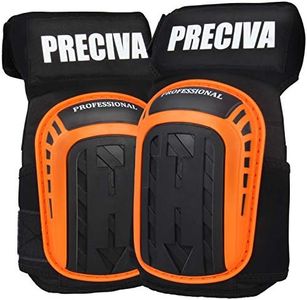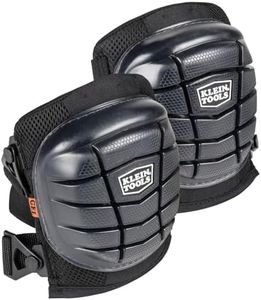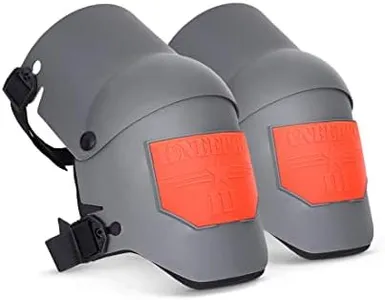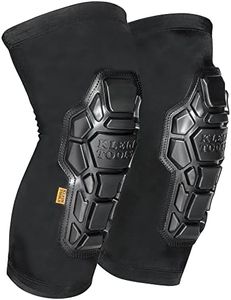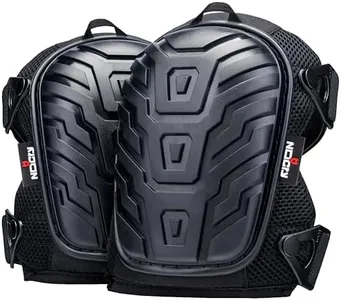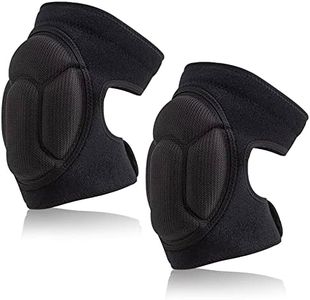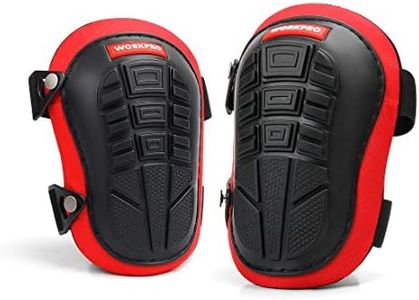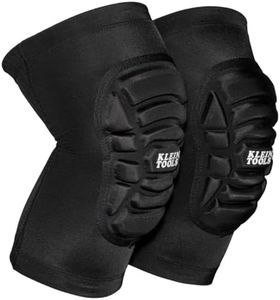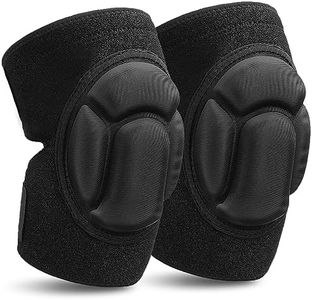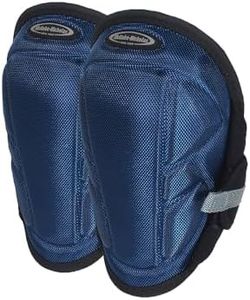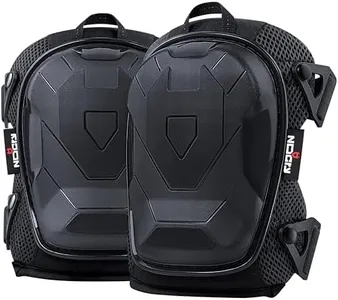We Use CookiesWe use cookies to enhance the security, performance,
functionality and for analytical and promotional activities. By continuing to browse this site you
are agreeing to our privacy policy
10 Best Construction Knee Pads
From leading brands and best sellers available on the web.Buying Guide for the Best Construction Knee Pads
Choosing the right construction knee pads is important for anyone who spends a lot of time kneeling on hard or rough surfaces, such as during flooring, tiling, carpentry, or concrete work. Good knee pads can help prevent knee injuries, reduce discomfort, and allow you to work longer and more comfortably. To find the best fit, it’s important to understand the different features available and think about your specific work style, the surfaces you work on, and how often you’ll be wearing knee pads.Padding MaterialThe padding material is the part of the knee pad that cushions your knees and absorbs impact. This can be made from foam, gel, rubber, or a combination of materials. Foam provides soft and lightweight protection, while gel offers better comfort and tends to mold to your knee shape, which can be helpful if you kneel for long periods. Some heavy-duty versions use rubber for maximum durability and support. If your work involves frequent kneeling or hard surfaces, picking knee pads with thicker or gel padding can help reduce fatigue and prevent pain. For lighter, occasional use, simple foam padding may be enough.
Outer Cap MaterialThe outer cap is the hard shell or cover that directly touches the surface you’re kneeling on. It can be made of plastic, rubber, or even leather. Hard plastic caps slide easily on smooth surfaces, which can be helpful for some jobs but risky if you need stability. Rubber caps have more grip and are better if you mostly kneel on slippery or sensitive surfaces. Leather or fabric covers are best for indoor jobs on delicate floors where you want to avoid scratches. Think about the types of floors you work on and choose the outer cap material that will protect both your knees and the surfaces you work on.
Strap Type and AdjustmentStrap type refers to how the knee pads attach to your leg. Some use single or double elastic straps, while others employ thicker bands or Velcro. Double straps generally keep the pad more secure, reducing slippage. Thick, padded straps and wider fastening areas tend to be more comfortable and less likely to dig into your skin over time. The way straps adjust is also important—look for easy-to-use buckles or Velcro so you can get a snug fit without taking too much time. If you need to wear knee pads all day, comfort and security in the straps become more important.
Size and FitKnee pads come in different sizes, and a good fit is essential for comfort and effectiveness. If the pads are too big, they may slip around and not protect you well; if too tight, they can restrict circulation and be uncomfortable. Many options are one-size-fits-most with adjustable straps, but if your legs are larger or smaller than average, look for options with sizing information. Consider trying them on if possible, or checking sizing charts provided by the manufacturer, to make sure they’ll fit comfortably during extended wear.
Weight and BulkinessThe weight and bulkiness of the knee pads affect how easy they are to move around in. Heavier, thicker knee pads can provide more protection, especially for demanding work, but may feel bulky and limit your range of movement. Lighter, slim-design pads are easier to wear for activities where you need to move around or stand up frequently. Think about your typical work day—if you need maximum protection or work on very hard surfaces, a bit more bulk may be worth it. For more mobile jobs or occasional kneeling, lightweight pads can be less intrusive.
BreathabilityBreathability refers to how well knee pads allow air to circulate, helping your skin stay cool and dry. Some knee pads are lined with moisture-wicking material or have ventilation holes. If you work in hot environments or wear knee pads for long periods, breathability can make a big difference in comfort and reducing sweat buildup. If overheating is a concern for you, look for pads with ventilated designs or moisture-wicking fabrics.
